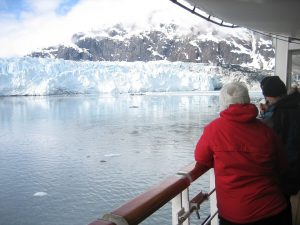The Largest Decrease for Workers Comp Insurance Premium in 40 years for Alaska Business Owners
In 2019, Alaska Workers Compensation Insurance Rates are expected to fall the most they have in 40 years. The governor office announced this past October that workers’ compensation insurance premiums should decrease by an average of 17.5 percent statewide starting the first of January. This decrease follows a 5.4 percent decrease in 2017 and workers’ compensation premiums are down roughly 25 percent since 2015. These reductions amount to an estimated $35 million in savings for the Alaska Business Community. According to Alaska Governor Bill Walker, “These proposed rate reductions are welcome news for Alaska businesses — lower workers’ compensation costs reduce the burden on the small businesses that strengthen our economy,” Walker said in a formal statement. “Thank you to the Alaska state Legislature and the Department of Labor and Workforce Development for their work on payment reform, contributing to significant rate reductions for 2019.”

What Caused Alaska Workers Compensation Insurance Rates to Decline?
There were a number of factors that contributed to the large decline in Alaska Workers Compensation Insurance Rates. Claim frequency and favorable medical costs continued to decline in 2018 which were two of the major factors contributing to declining rates. The claims frequency means that across the board there were less claims filed in 2018 compared to previous years. This is a favorable measurement for insurance carriers because this decreases the costs related to paying out insurance claims and processing those claims. Declining medical costs is largely because of streamlined processes throughout the medical facilities operating within the workers compensation system.
There was also legislation passed in 2018 that will contribute to lower rates in 2019 and for the foreseeable future. The legislation was House Bill 79 (HB79). the legislation clarified who is classified as an independent contractor and who needs to be covered by workers’ compensation insurance. This bill made it easier to obtain exemptions, to acquire reporting data, and to make payments.

What can Business Owners do to Maximize Alaska Workers Compensation Insurance Rates?
There are many ways a business owner can save, in addition to the savings the Alaska Business Community is receiving from workers compensation premiums declining. Here are 5 things a business owner can act upon to maximize savings on Alaska Workers Compensation Insurance.
- Make sure your Business is Classified Properly
- Implement a Safety Program
- Incorporate a Return-to-Work Program in the Safety Program
- Consider Pay-as-You-Go Workers Compensation
- Partner with an Independent Insurance Agent
Proper Classification Codes
In any given year, there are more than 700 different classification codes for businesses and employees to use when it comes to workers compensation insurance. Making sure your business is classified correct is a step that can save a lot of headaches during a mid term or end of term audit. Proper classification can prevent your business from over or under paying premium throughout the year. If you under pay throughout the year, it can cause your business to owe additional premium at the end of the term. Even if your business over pays through out the year and gets a credit on their policy, it means your business has had unnecessary cash flow tied up in workers comp premium payments. This is money that could be used on other necessary business needs.
Well-Documented Safety Program
A safety program can help a small business lower what they pay for commercial insurance by decreasing the frequency and severity of workers compensation insurance claims. The safety program does not have to be exhaustive. It can be as small as part of the new staff training program and a few 15 minute huddles each week. It is important to have these meetings documented. Your insurance agent can use this documentation to get you an additional discount when purchasing coverage. The documentation can also be used when a business experiences a year in which there are several claims or one large claim. Usually when this occurs your can expect your insurance premium to rise. If you have a documented safety program, your independent insurance agent can use it to show the claims are more of an outlier and not a sign of more claims to come.
A Return-to-Work Program
A return to work program is a great way to show your employees you care about them and help them get back to their daily routine quicker. When executed properly, a return to work program can help get your injured workers back on the job, even in a limited capacity, and back a part of their regular work routine. This is the best way to keep insurance claims under control and help keep your experience modification rating low.
Pay-as-You-Go Option
Some businesses may benefit from Pay as You Go Workers Compensation. Most traditional workers comp policies require 25 to 33 percent of the entire premium up front just to get coverage in place. With the Pay as You Go Option, most businesses can get coverage in place for as little as a few hundred dollars. This allows cash strapped businesses to get coverage in place, but use their needed cash flow for other more urgent business needs.
Partner with an Independent Agent
An independent agent is always the best way to find the most comprehensive insurance coverage at the lowest rate possible. Especially if the independent agent has several years of experience and relationships with multiple insurance carriers. They can use this knowledge and these relationships, to know which carriers are actively looking to quote your industry and and force carriers to compete for your business.
